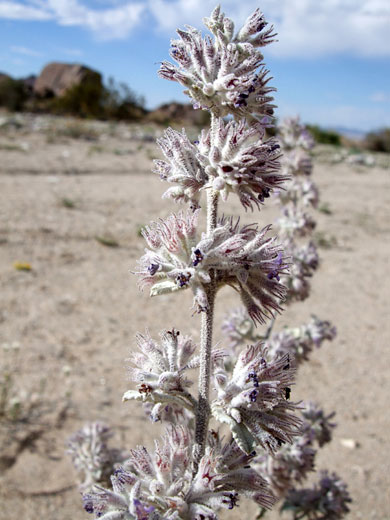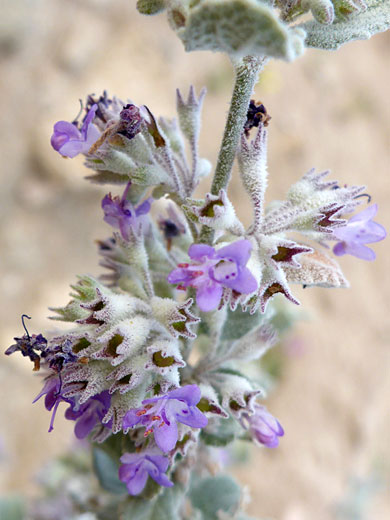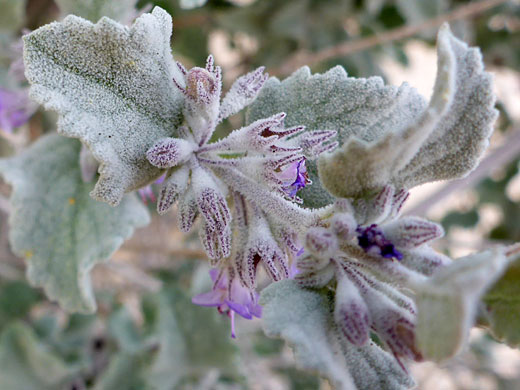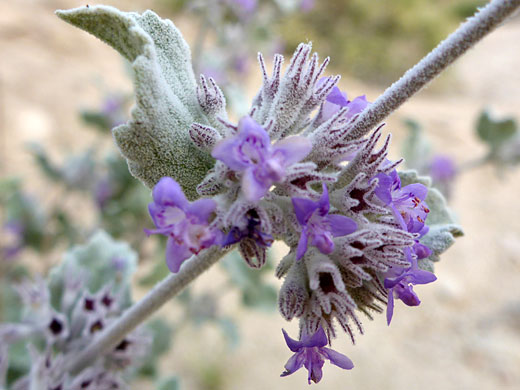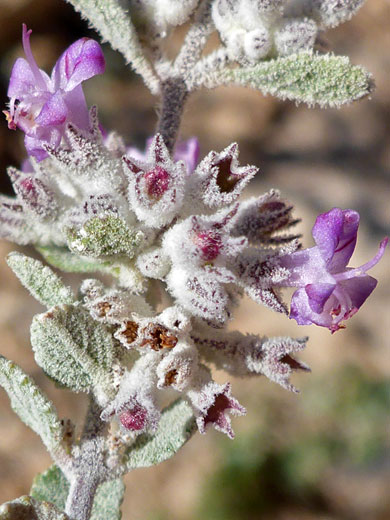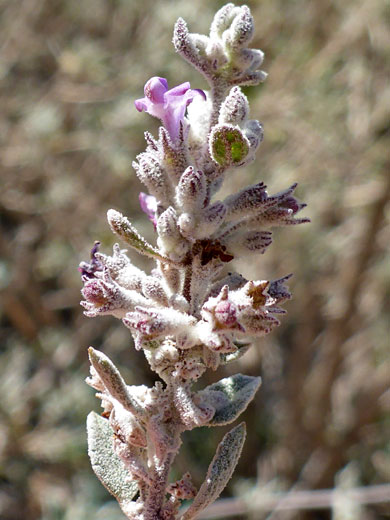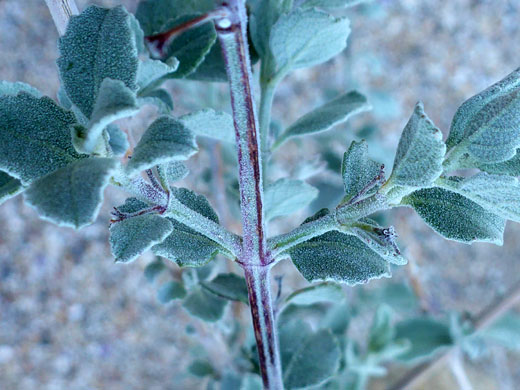Common name:
Desert lavender
Family:
Scientific name:
Hyptis emoryi
Main flower color:
Range:
Southeast California, extreme south Nevada and west Arizona
Height:
Up to 15 feet
Habitat:
Washes, gravelly or sandy locations, scrubland; up to 3,000 feet
Leaves:
Round to ovate, on short stalks, with rounded teeth along the edges
Season:
January to May
The most noticeable aspect of hyptis emoryi is the dense hair covering; stems, leaves, bracts and calyces are covered with thick, white, star-shaped hairs, making all seem dull grey in color, though under the hairs, the leaves are grey-green, the stems, bracts and calyces purplish. Plants inhabit arid regions in the Sonoran and southern Mojave deserts; the densest hair covering is found in the driest locations.
Flowers are produced as dense, whorled clusters along the upper section of the branched stems; individual blooms are formed of a calyx, extending into five sharp, narrow lobes, and a small purple flower, in which the corolla opens to two lips, the upper two-lobed, the lower three-lobed. Four lightly hairy stamens lie against the lower lip, and a purplish style extends a little way beyond the lobes, forked at the tip. The central lower lobe is bent backwards. Often only a few flowers are in bloom at any one time, so mostly only the spiky calyx lobes are visible.
Flowers are produced as dense, whorled clusters along the upper section of the branched stems; individual blooms are formed of a calyx, extending into five sharp, narrow lobes, and a small purple flower, in which the corolla opens to two lips, the upper two-lobed, the lower three-lobed. Four lightly hairy stamens lie against the lower lip, and a purplish style extends a little way beyond the lobes, forked at the tip. The central lower lobe is bent backwards. Often only a few flowers are in bloom at any one time, so mostly only the spiky calyx lobes are visible.
All Contents © Copyright The American Southwest | Comments and Questions | Contribute | Site Map


